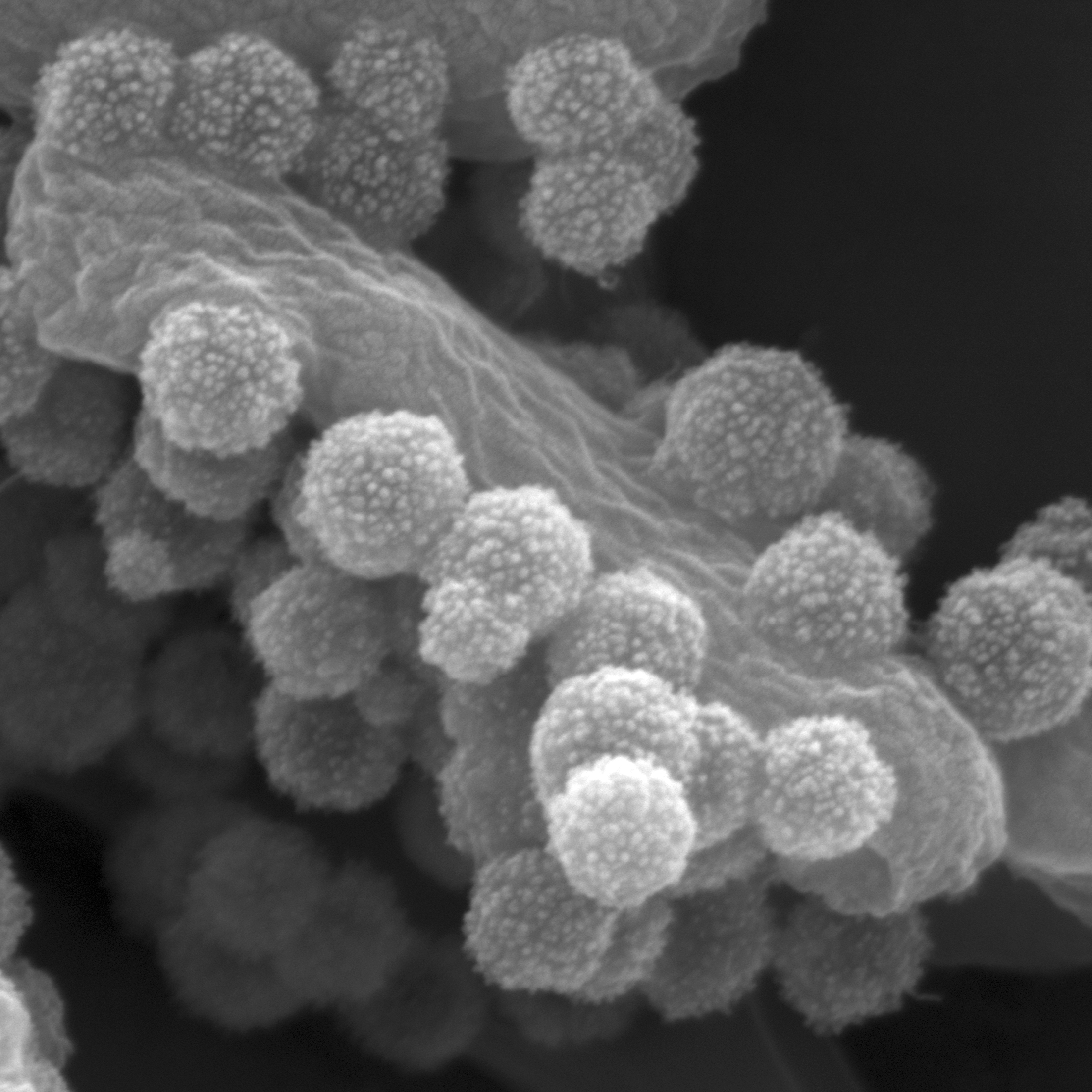By engineering biocompatible silica nanoparticles with controllable surface nanostructures, these bio-inspired nanoparticles have shown great promise in green pesticide formulation, antibiotic free animal feed and a wide range of drug delivery applications. Silica nano-pollens, with the surface structure mimicking pollen grains, have been used as a way to get DNA into cells, a critical step in genetic engineering. By using electron tomography, Professor Yu has demonstrated that the nature of the surface nanotopography is important in the effectiveness of DNA delivery.

Scanning electron microscope image of nanopollen adhering to bacteria.
Transmission electron micrograph of nanopollen from Microscopy Australia's University of Queensland facility. Each nano pollen is ~200 nm in diameter.
September 12, 2019